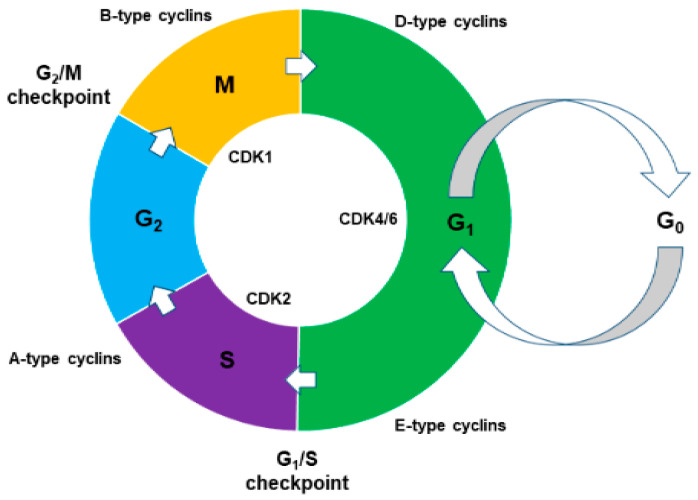Figure 2.
Schematic representation of the cell cycle. Reversibly quiescent cells (G0) are able to re-enter the cell cycle and begin cycling in Gap 1 (G1) phase upon receiving proper mitogenic signalling. This causes the upregulation of D-type cyclin production which complex with cyclin dependent kinases (CDKs) 4 and 6 and partially inactivates retinoblastoma protein (RB) [42]. This allows for the production of E-type cyclins that interact with CDK2 to hyper-phosphorylate and fully inactivate RB. This inactivation results in the expression of E2F family transcription factors which upregulate the expression of DNA replication proteins, such as DNA polymerase in preparation for Synthesis (S) phase [40]. In the event of DNA damage, sensor kinases ataxia-telangiectasia mutated (ATM) and ataxia-telangiectasia and Rad-3 related (ATR) phosphorylate p53 and the checkpoint kinases Chk1 and Chk2 which collectively signal effectors such as cyclin-dependent kinase inhibitors (CKIs) that arrest the cell at G1/S to allow for DNA repair or, otherwise, initiation of apoptosis [83]. A-type cyclins are produced in late S phase and drive mitosis onset, followed by their degradation and production of B-type cyclins that complex with CDK1 and predominantly drive the cell through Mitosis (M) phase [42].

